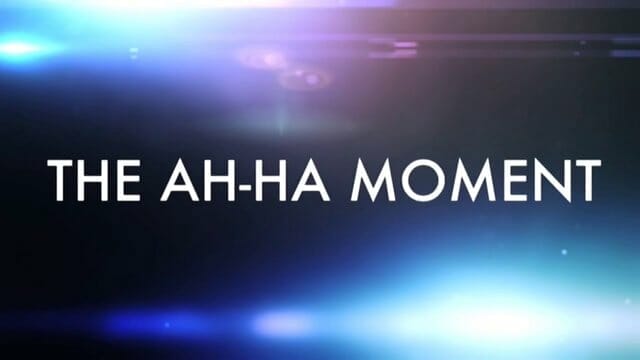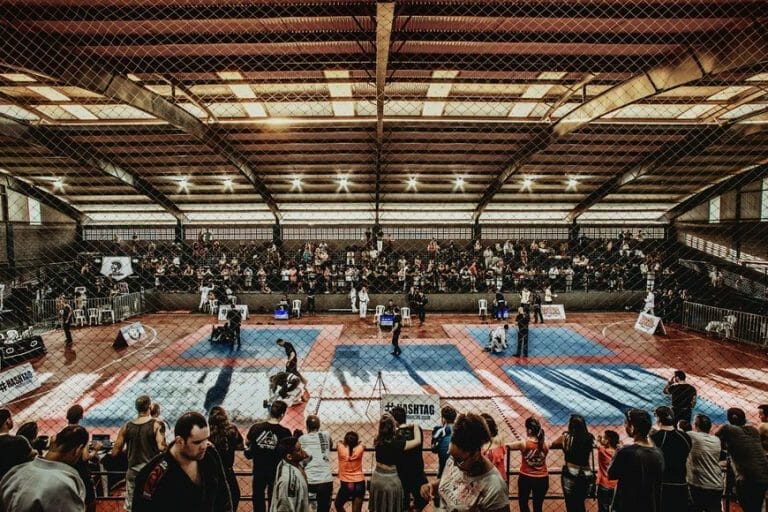The “Ah Ha” Moment in Grappling
The “Ah Ha” MomentBy Jason Scully
www.GrapplersGuide.com
Have you ever been working on a technique over and over again but for some reason you just can’t quite get it? Then your instructor walks up to you and says, “Do you have a question?” or “Is there something I can help you with in your technique”. Then you explain that you’ve been working on a technique and you know it works because you’ve seen many people use it effectively but for some reason you just can’t seem to get it right.
After you show him what you’ve been doing. He grabs your training partner and then show’s you the littlest and simplest detail you could have ever imagined but that “little” detail just made you go “Ah hah!!, Why didn’t I think of that?”. The simplest thing that he just showed you, now made your technique go from not being as effective to being extremely effective.
This is a scenario that is very common and it’s what I call “Invisible Grappling”. It’s the details and movements that take your techniques to the next level but for some reason they aren’t very obvious. How about I give you some examples:
Shoulder Walking – The movement where you move your shoulders backwards one shoulder at a time is what I call “shoulder walking”. A very common scenario where you will see shoulder walking used effectively is when you are being stacked in your guard. When your opponent starts to stack you before he gets your legs over your face, quickly walk your shoulders backwards as you make your hips heavy. This will make it much harder for them to stack you because you are basically going in the same direction your opponent is taking you. You can also place your hands on your thighs and push on your legs as you shoulder walk backwards to increase the pressure against your opponent. Some scenarios where you can effectively use “shoulder walking” are:
- When you are getting stacked when attempting an armbar from the guard.
- When you are getting stacked when attempting a triangle choke from the guard.
- You are getting stacked when your opponent attempts a double under the leg pass.
Face Control – If your opponent can not move his/her face then they will not be able to move their body. If their head is stuck looking in a particular direction and they can’t move it, you will have a lot of control over them. Let’s give some examples.
- Lets say you have your opponent in side control with your arm under their head and your shoulder pressuring into their face (Shoulder of Justice) forcing them to look away from you. When you do this, they lose the ability to turn their head. They will not be able to turn into you because they can’t turn their face.
- If you have the mount with your arm under their head while applying shoulder pressure forcing their head to turn to one direction preventing them from turning it, they will have a hard time bucking and turning to escape.
- Next time you get the north south position place a lot of pressure down on your opponent’s head with your body pinning it to look sideways and not only will it become very uncomfortable for them but they will have a much harder time escaping.
Head Control – When you think of head control, what do you think of? You probably just think about grabbing your opponents head or neck and pulling it down so you can get control of it. What details do you think of to make it better? How can you increase the control of your opponent’s head? First you don’t want to grab your opponent’s neck. That’s not head control. That’s “neck” control. When you control closer to your opponent’s neck they will have more of an ability produce force against you and possibly still be able to posture up. The neck has a large amount of muscles in that area. The more muscles in the area you grab the more force your opponent can produce.
So what do I want you to do? I want you to control right on the back of your opponent’s head where there isn’t hardly any muscle. When you control by this area you’ll will make it much harder for them to posture up. Here are some examples of how you can use this concept effectively.
- When you’re in the clinch with your opponent from standing. Don’t grab the back of their neck, grab the back of their head. Take notice the extra amount of leverage you will gain.
- When you are going for an armbar on the bottom, take the leg that is across your opponent’s neck and angle it out towards the back of your opponent’s head while you place pressure down. Take notice of how it’s much harder for you opponent to posture up and even try to stack you. To compare, you can also place your leg across the back of their neck so you can see how they can posture better and possibly also stack you. This is also one of the reason why you “should not” cross your ankles when going for an armbar from the guard. They isn’t any head control.
- When you work to establish head control of your opponent in an attempt to break your opponent’s posture when their in your guard don’t grab the back of their neck. Grab behind their head where there isn’t much muscle. You’ll pull their head down much easier.
This are just a few concepts of “Invisible Grappling”. As you gain more experience you may notice little details that you can use to improve upon what you already know. Always be aware that because you “think” you know something well it doesn’t necessarily mean that you can’t make it better. There’s a reason why you hear others say that it’s usually the “little details” that make the biggest difference.
Thank you and great training to you,
Jason









